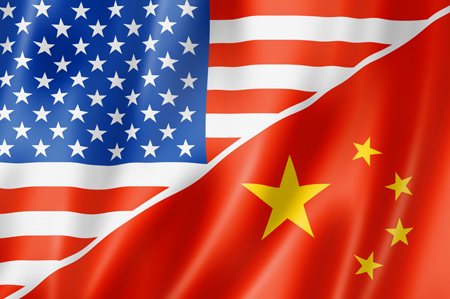China’s Soybean Imports ‘to Hit 100m Tonnes’ in 2018-19 for First Time
Category: Oilseeds
 (Agrimoney) – Chinese imports of soybeans will hit a record 100m tonnes next season, boosted by “unrelenting growth” in consumption areas, although rapeseed purchases will remain below their all-time high.
(Agrimoney) – Chinese imports of soybeans will hit a record 100m tonnes next season, boosted by “unrelenting growth” in consumption areas, although rapeseed purchases will remain below their all-time high.
The US Department of Agriculture’s Beijing bureau, in its first forecasts for 2018-19, forecast China’s imports rising by 3m tonnes from this season’s 97m tonnes, the current record high, as demand far outpaces the country’s own production potential.
“Chinese consumption of meat, seafood, vegetable oils, and soybeans for food-processing continues its unrelenting growth, fuelled by rising affluence, urbanisation, and expanding consumer preferences,” the bureau said.
“The Chinese crushing industry’s demand for soybeans continues to be strong,” with processors, with an estimated potential to take in 500,000 tonnes of the oilseed a day, indeed running well below capacity.
DDGs spillover
Meanwhile, needs for soymeal, produced by crushing soybeans, are only being enhanced by constraints on imports of distillers’ grains (DDGs), a rival high protein feed ingredient, made as a byproduct of ethanol manufacture.
“China’s low imports of DDGS remain a contributing factor for soybean imports in 2018,” the bureau said.
And growing food needs are also contributing to import needs – despite a ban on use of foreign supplies for this use.
“Economic incentives are reportedly driving greater use of imported soybeans for food in the coastal provinces.”
‘Major impediments’
However, China’s own output of soybeans looks set to ease back by 250,000 tonnes to 14.3m tonnes this year, with the government farm support regime overall still seen as broadly offering farmers better returns from planting corn.
The bureau forecast China’s soybean area for the 2018 harvest easing by 50,000 hectares to 7.85m hectares.
Meanwhile, yield growth is being restrained by a failure to update seed technology and agronomic practices.
“Soybean farmers continue to struggle to boost yields and productivity which have remained stagnant for several years,” the bureau said.
“Without access to the latest seed technology, Chinese soybean farmers face major impediments to improve productivity,” with the “lack of proper crop rotation” also a hindrance to improvement.
US vs Brazil
Still, for the US itself, the bureau forecast “serious challenges” to the country’s soybean exports to China “in 2017-18 and even beyond”, highlighting competition from rival origins, and in particular Brazil.
“US soybean exports will face challenges… given the fierce competition from reportedly abundant suppliers in South America.”
However, the bureau, which made no mention of US-China trade tensions which are currently concerning many investors, added that “in the long-term, US soybean exports to China are expected to keep growing based on China’s growing demand and insufficient domestic supplies”.
‘Low returns and excessive rainfall’
For rapeseed, the bureau forecast Chinese imports at 4.70m tonnes in 2018-19, a 100,000-tonne rise on its estimates, but staying short of the 5.04m tonnes imported in 2013-14.
Again, China’s own output was seen falling, by 200,000 tonnes to 14.1m tonnes, on lower sowings, with the bureau flagging talk of tumbling area in some provinces, contrasting with an estimate from the CNGOIC bureau of stable national plantings overall.
“Another industry source forecast a significant fall of rapeseed acreage, down by 30%, in Hubei and Anhui provinces in 2018-19 due to low returns and excessive rainfall during the planting time,” the bureau said noting that “due to the abolishment of the government’s price support, estimated average rapeseed profits in 2017-18 continued to be negative”.
Meanwhile, a deal with Canada – the top exporter of rapeseed (canola) to China – on quality restrictions was seen as also underpinning import volumes.
“In light of the declining domestic production and a tentative agreement on foreign matter requirements with China’s largest rapeseed supplier, industry analysts believe rapeseed imports will recover in 2018-19.”




